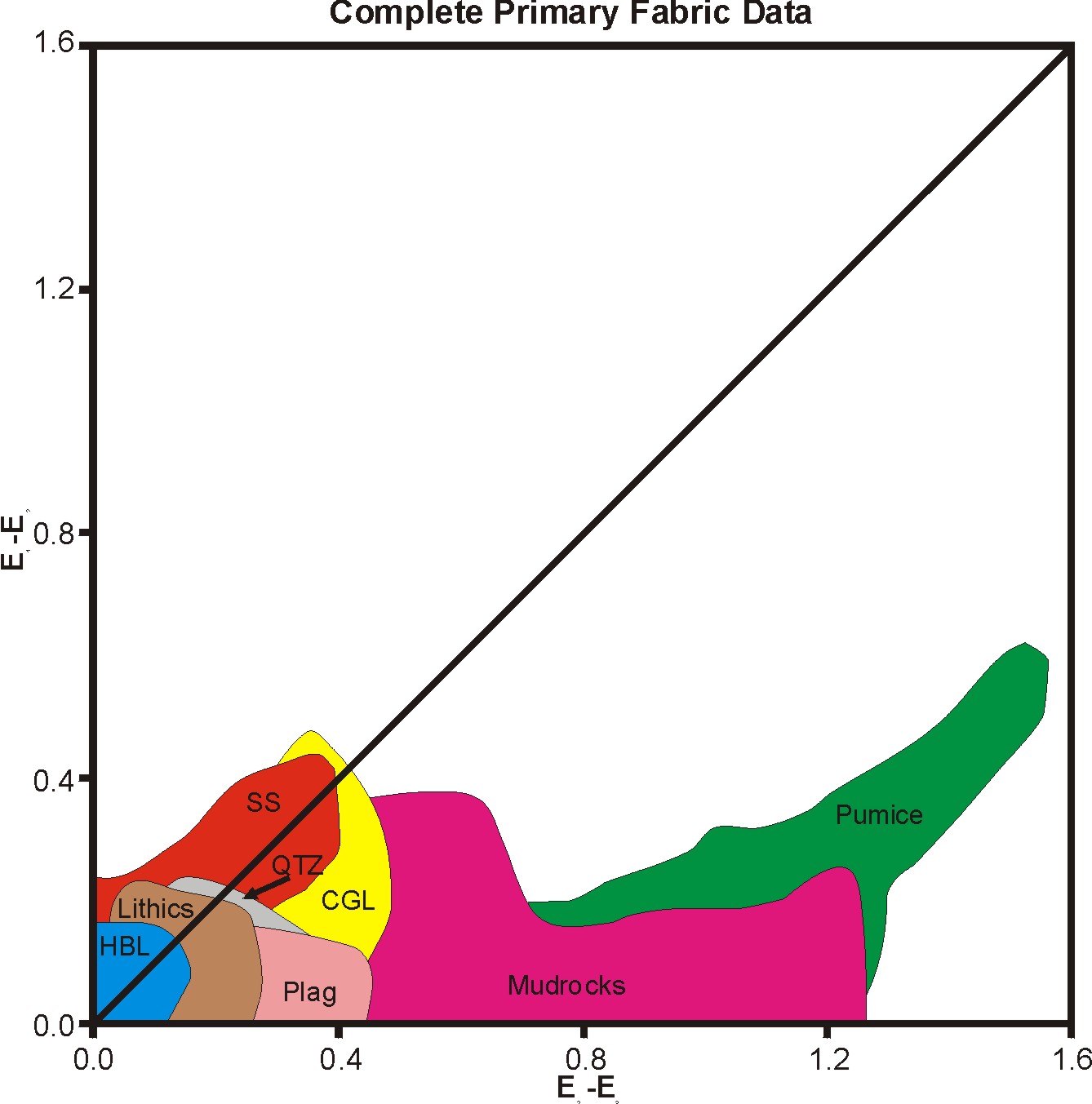The final shapes and orientations of fabric elements (e.g. quartz grains in a sandstone) used to quantify the intensity of finite strain experienced by a rock is the product of distortions, volume changes, and rotations on a pretectonic primary fabric. Unfortunately, most studies reporting quantitative assessments of finite strain assume initially spherical shapes, non-spherical but randomly or uniformly oriented fabric elements, or that the effects of primary fabrics are identifiable even after straining.
In this study we have compiled the results of nearly 300 fabric ellipsoid determinations from a variety of undeformed sedimentary and volcanic rock types including multiple fabric elements (e.g. crystals, pumice) from within the volcanics. While depending greatly upon the rock type and the particular fabric element in question, the primary fabric ellipsoids determined here range from those that only slightly departed from a sphere (e.g. sandstones: 1.3: 1.1: 1; HBL in volcanics: 1.2: 1.1: 1) to those which are extremely oblate (e.g. pumice: 3.2:2.4:1; shale: 1.5: 1.4:1). These results highlight the need for caution when selecting the type of fabric element used in strain analyses.
Because the orientations of the primary fabric ellipsoids reported here rarely exhibit consistent relationships to bedding directed removal of the primary fabric contribution is not generally possible. We suggest, however, that the most appropriate means of correcting for the affect of a primary fabric is to multiply the finite fabric ellipsoid by the reciprocal of the mean primary fabric ellipsoid axis by axis for every axis combination. The result of making the correction in this manner is the bracketing of the range of possible final strain intensities.
